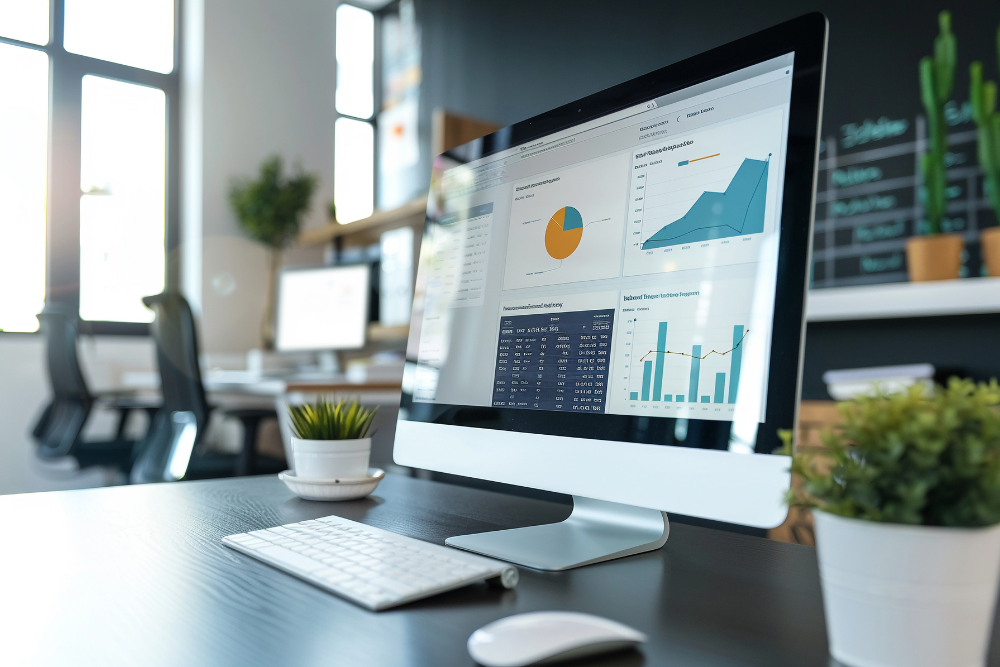Until just a few years ago, businesses had the luxury of making decisions based on instinct—but not anymore.
Today’s rapidly evolving business landscape demands unprecedented accuracy and data-driven decision-making (DDDM). With rapid progress in business analytics and storage capabilities, organizations can leverage business information to their advantage.
According to a recent Gartner survey, 77 percent of respondents claimed that developing their forecasting process was among the top three business performance initiatives at their organization.
Many organizations understand the importance of forecasting but are unsure where to start.
If you’re one of those organizations, don’t worry—here’s a comprehensive look at how you can leverage your accounting software’s forecasting capabilities.
What is Forecasting in Accounting?
In business terms, forecasting is a process that uses quantifiable historical trends and verifiable data sets to project future performance. This data-driven approach enables organizations to make more informed decisions and increases their chances of success.
Forecasting shouldn’t be confused with budgeting; although the two concepts are often lumped together, they represent different sides of the same coin. Budgeting quantifies desired outcomes, while forecasting represents actual performance that will be achieved in a given future time period.
How Can Accounting Software Help?
Organizations have used manual forecasting methods for several decades, but these lack the sophistication and accuracy of automated forecasting mechanisms. Artificial intelligence and automation have made it possible to track data in real time and uncover actionable insights in mere seconds.
As the world’s leading accounting software solution for small businesses, QuickBooks also has budgeting and forecasting capabilities. Using QuickBooks cloud hosting, users track metrics on dedicated dashboards and view future projections with the click of a mouse button.
What to Forecast?
Knowing what to forecast can help give your organization a clear view of its priorities. While needs and goals differ depending on your organization, there are three main elements that all businesses should focus on:
- Costs: include several expenses, such as utilities, rent, insurance, marketing, and payroll. For businesses selling physical products, COGS (cost of goods sold) is a significant metric that should be kept in mind during forecasting. This will help you determine other costs associated with manufacturing or stocking goods.
- Revenue: forecasting can help determine future income through sales and other means. During forecasting, current revenue is adjusted for performance and seasonal trends to reflect future estimated value.
- Market trends: are more abstract and depend on several external factors, including consumer preferences, technological changes, and industry events. These affect multiple aspects of business, including staffing requirements, raw materials availability, inventory stock, and price adjustments to reflect inflation.
How to Do It?
Once you’ve determined which indicators to track, the next step is to pinpoint how you plan to forecast.
The first step is to identify the frequency (weekly, monthly, or annually) and the scope of forecasts. The next step involves choosing a forecasting method; the preferred method will depend on the objective, the nature of the data, and the discretion of your business analyst.
These are four commonly used quantitative approaches to forecasting:
- Rule of thumb: This is a simplified approach that takes past results and copies them forward without alteration. For example, current sales in the future month are expected to be the same as the following month.
- Smoothing: This takes past performance, removes any anomalies, and uses weighted forecasting to determine future results more accurately.
- Decomposition: Decomposition separates historical data into different components and views each part separately to create a more accurate forecast. Components can include seasonal performance, cyclical factors, and directional trends.
- Regression analysis: Regression analysis examines whether a causal relationship exists between two or more variables and how strong the relationship is. For instance, how do changes in weather affect ice cream sales?
Incorporating With Overall Strategy (Mention QB)
Implement accounting software that offers features that can help your business succeed. Here’s what you must keep in mind during implementation:
- Identify essential metrics and KPIs. A clear understanding of what business metrics matter to the organization can help determine specific data points to forecast. Review cost, revenue, and trend metrics carefully to determine KPIs, as this will ultimately help you determine which solution is best suited to your needs.
- Find the right software. With several accounting software solutions available in the market, choosing the right one can be difficult. For small businesses, we recommend QuickBooks cloud hosting, as it has powerful forecasting and budgeting capabilities. Additionally, the platform is used globally and can be customized to meet individual needs.
Implementing the software is just as important as the software itself.
As a leading commercial hosting provider, gotomyerp offers premium QuickBooks cloud services at competitive rates. Our dedicated software experts can help at each stage of implementation, including optimization, licensing, support, and migration.
To get started, call us at (877) 888-5525 today!




